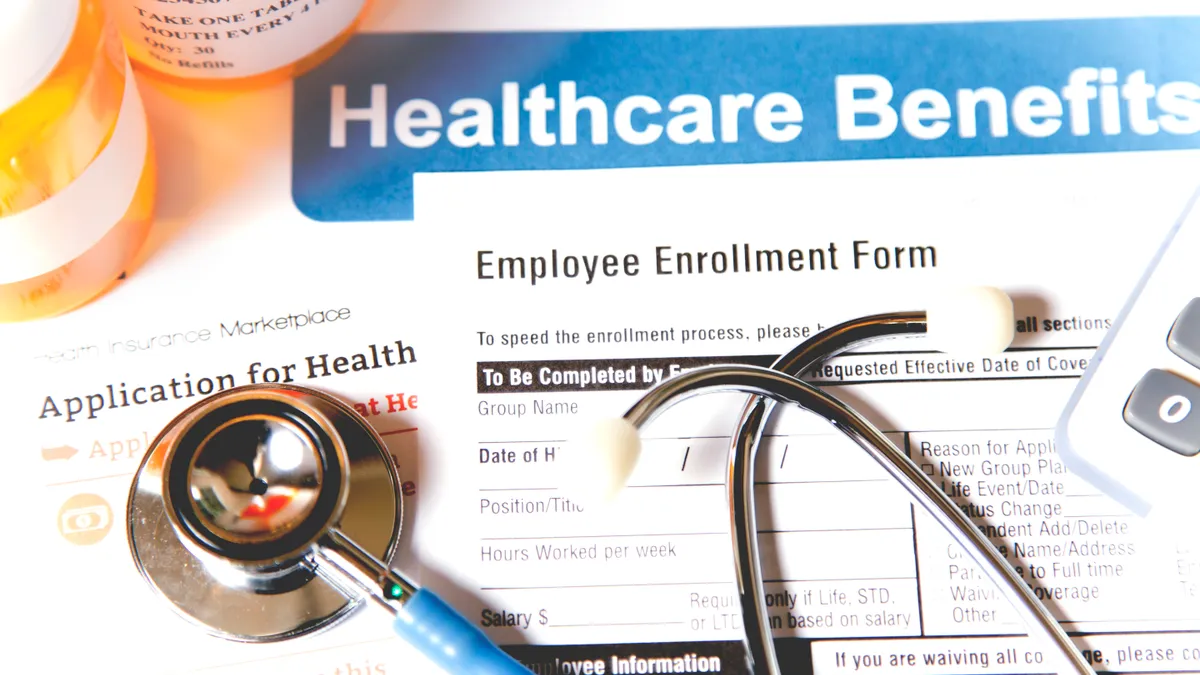As 2016 dawns, change has already begun to impact employers the nation over. As part of the new omnibus spending bill, the Cadillac Tax, which affects healthcare benefits valued at over $10,200 for individuals and $27,500 for families, was delayed for another two years, making the much discussed 2018 deadline obsolete.
In all, 2016 will most likely be another transitional year for employers and their benefits plans, focusing more intently on making employees better consumers of their healthcare. HR Dive spoke to the experts and gathered up the benefits trends for 2016 worth keeping an eye on as the year starts.
What’s the deal with the Cadillac tax?
While many employers most likely welcome the extension, some may use it as an excuse to put off healthcare benefits reform for yet another year.
Most employers have already taken one of two paths – either waiting it out until the last minute, banking on the tax potentially not surviving as is, or already beginning to make sweeping changes to their healthcare plan design, Jim Winkler, the global chief innovation officer at Aon Hewitt, told HR Dive.
"In 2016, those changes will continue to manifest in higher deductibles and more movement to CDHPs," Winkler added. "To get below the tax, the most expedient lever to pull is plan design."
By now, employers are likely switching their employees to (or at least offering) a high deductible healthcare plan (HDHP) or consumer driven healthcare plan (CDHP), Jeff Oldham, vice president of the Benefitstore at Benefitfocus, said. Such changes only work if employers are also willing to educate employees on their pre-deductible spend and how to reduce it.
More and more employers are beginning to look at healthcare insurance as a sort of "stop-loss" insurance, according to Oldham, tying back to what Benefitfocus considers the car insurance analogy.
The car insurance analogy
It's an interesting thought – that one day, healthcare insurance could one day evolve into a format akin to how we use auto insurance. With CDHP and HDHPs especially, the goal cannot be to hit one's deductible, Oldham said, even if that is how some consumers view their health plans now.
"While it is a little extreme, you tend to go out of you way not to engage your auto company," he added. Most car part buyers obtain items for their cars out of their own pockets on purpose, while today's healthcare consumers talk about the “prescription jackpot” when they hit their deductibles.
Not everyone agrees with the analogy entirely. Karen Marlo, vice president of the National Business Group on Health, notes that philosophically, it makes sense, especially since health insurance "doesn't work like any other insurance we use in the country." Part of that is simply because (despite the incredible advances in modern healthcare) a damaged car – even one that needs to be replaced – is almost always a less catastrophic event than a human that needs care. Additionally, consumer price negotiation is basically nonexistent, as is.
"I always laugh when I get my EOB back and see the price put down and what the insurance actually pays," she said. "I don't have an ability to call and negotiate a price."
The model health benefits are based on today is another potential inhibitor, Winkler said.
"Auto insurance is a direct contract with an individual consumer," he said. "But as long as health benefits are tied to tax benefits, it will stay in the employer arena. It is just the most efficient."
However, it is starting to shift, he adds. Private exchanges are starting to give employees a "much broader array of design and network choice," particularly if an employer is willing to provide a more narrow line of providers. Don't like Rate A? Try Rate B. In that sense, benefits shopping comes closer to how auto insurance is handled, Winkler said.
But overall, something like the Cadillac tax could be the biggest impetus for future change. If the excise tax is successfully implemented and employers (alongside other employer regulation shifts) start to shy away from the employer-provided model, Winkler predicts that that is when healthcare benefits will shift to a system more like traditional insurance.
The nature of benefits tech
Alongside the changes heralded by CDHPs and private exchanges, health benefits tech has seen some substantial change as of late – but 2016 will be more about refining the tools that have been put in place within the last couple years.
Shan Fowler, senior director of product strategy at Benefitfocus, noted three trends in particular with benefit technology.
- Consumer experience and support tools. On the consumer side, these tools are helping drive costs down by helping consumers understand and pick the plans that would fit them best. "There's been a lot of focus on understanding the behavioral economics of how we choose things," Marlo said. "You can't just put 50 choices in front of employees and expect them to figure it out."
- Benefits analytics. Beyond the usual actuarial purposes, strong benefits analytics can shine a light on inefficiencies in plan design. The right tools can point out where an employer is both over and under-spending, based on what employees are actually using.
- Tool flexibility, particularly the ability to address compliance issues. With compliance becoming more complex with the Affordable Care Act – including the new 1094/1095 tax forms – the latest and best benefits tech is starting to encompass all of it in a sort of “compliance-as-a-service” format. Even better: user experience has also improved, with some technologies similar in usability to TurboTax emerging on the field.
Where wellness is going
To accompany the shift to HDHPs and CDHPs, more companies are beginning to rely on wellness programs to help save both the employer and the employee money on healthcare costs.
"Wellness programs have a similar stigma to HDHPs," said Fowler. "Now they are both much more mutually beneficial."
Oldham noted that the old "know your numbers" model of wellness has started to fade. He has seen more employers testing telephonic coaching, gamification and free apps on small parts of their populations.
Winkler noted three trends in particular making headway in wellness.
- Employers are starting to examine their incentive programs. Many are still searching for the right balance between participation-based incentive (colloquially known as the "carrot and stick" incentive) and results-based incentive (such as whether or not employees reach a certain BMI). The perfect balance will likely depend on the type of programs employees need and are attracted to.
- Another trend includes recognizing that some wellness features need to be applied differently to help high-risk people. Wellness has often seemed more focused on people who were already fairly healthy and simply needed a "fitness challenge." More employers are trying now to meet their employees where they are and provide them wellness challenges that fit their actual needs across a larger spectrum.
- Last, and perhaps more importantly, was a recognition that the definition of wellness needs to expand beyond simply physical well-being. Instead, more companies are making sure their wellness programs encompass mental, social and financial well-being, among others.
"For example, many people are very stressed financially," Winkler said. "When you are worried about finances, you don't sleep as well, so you are not as likely to hit the gym." Of course, this leads to a spiraling effect that touches all types of a person's wellness, leading to poor health overall.
Marlo agreed with this, noting that more employers are beginning to see that they need to "help people along the spectrum overall." Anecdotally, she has seen a lot more excitement about this type of wellness.
For now, it seems benefits trends are more in a "wait and see" and "continue to slowly adjust" year than in years past, which many employers may be thankful for. But recognizing and remaining on top of the trends now in a transitional year will be key for success.





















